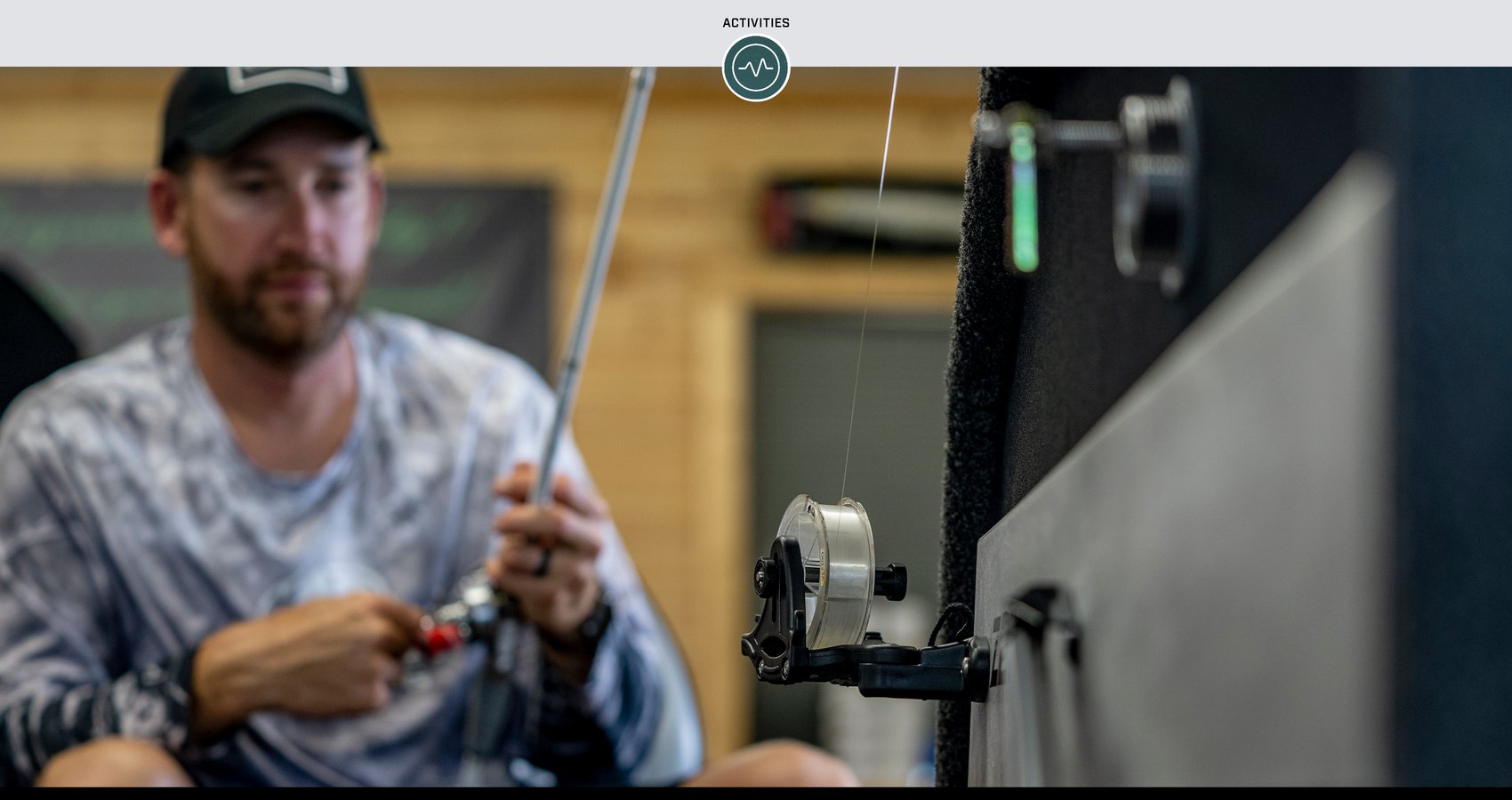Having a lot of horsepower is great when you want to go fast. But when the goal of a day on the water is to dial in precise low-speed trolling presentations to catch more fish, what you need is not a high-horsepower outboard. You need a kicker motor, like the engines in the Mercury ProKicker® series.
Recently, Mercury Marine launched a new 9.9hp EFI ProKicker outboard that’s even lighter than its predecessor. Mercury Pro Team member Chase Parsons was one of the first to get his hands on the new kicker, which he installed on his NITRO® ZV21 Pro – the boat he uses when competing on the National Walleye Tour.
In the video above, Parsons shows how easy it is to install the ProKicker on a boat that previously had a kicker installed.
Before you get started
Handy boat owners with some mechanical experience will find that replacing a Mercury kicker with a new one is a manageable DIY project. However, if you’re performing a new installation on a boat that did not have a kicker before, there could be additional steps required to connect the fuel system or drill mounting holes in the transom that are more complicated than what’s shown in the video above and should be done by a professional.
Below, we’ve provided some tips to help when installing a new tiller-steer 9.9hp EFI ProKicker on a boat that previously had a kicker. The steps for other ProKicker models may vary from what’s described here. Always follow the instructions in the operation, maintenance and installation manual for your particular engine. And if you’re not sure about a process, a Mercury Authorized Dealer would be happy to handle it for you.
Find your owner’s manual – Mercury operation, maintenance and installation manuals, along with complete service manuals, are available either to download or order online. You can find more information here.
Mounting directly on the transom or on a transom bracket
Your boat’s design will dictate how the ProKicker outboard gets mounted to the transom. On some boats, you can hang the outboard’s mounting bracket directly on the transom next to the main outboard. This typically works on aluminum boats with a straight, reinforced transom.
Many fiberglass boats or boats with a stern platform require a kicker-mounting bracket that gets bolted to the stern of the boat. Installing a bracket is not covered in this article or video. Consult the instructions for your boat and bracket model.
In the case of Parsons’ install, he repowered his boat by replacing an older kicker with a new one, so he mounted his new kicker to a bracket that was already installed.
Positioning your kicker engine
Your kicker can be mounted on either side of the primary outboard. It should be located far enough from the primary engine that neither outboard will contact the other when making a full turn, and in a spot where it’s comfortable to reach the motor to deploy, start it, steer and stow it. Also, try to avoid mounting the kicker directly over your electronics transducer. You may need to move the transducer.
4 important steps for installation
Installing a new ProKicker motor is straightforward with just a few essential steps. Follow these guidelines to ensure your kicker is securely mounted, powered, and ready for the water.
- Through-bolting – Make sure you through-bolt the engine to the transom or mounting bracket using the included mounting hardware. Follow the torque specs outlined in your manual.
- Fuel lines – The engine should be connected using the new fuel line that’s included, following all guidelines regarding fuel connections and fuel system setup in the manual.
- Connecting power – All ProKicker outboards come with electric start and power tilt, thus requiring battery power. Connect the positive and negative power cables to the boat’s cranking battery and you’re all set.
- Add fluids – Mercury ships ProKicker outboards with gear lube in the gearcase. You’ll need to add engine oil in the quantity outlined in your owner’s manual.
Depending on your engine model and boat setup, there may be some additional steps required. Always consult your manual for specifications.
Don’t forget the break-in period
When you’re ready to fish, all that’s left to do is prime your fuel system and find some walleyes. Just remember that Mercury recommends a break-in period for all new engines. For the new 9.9hp EFI ProKicker, this process is completed over the first 10 hours of operation. Complete details are available in your manual.
Why repower a kicker?
There are a lot of reasons to consider repowering your boat with a new kicker motor. First is reliability. If you’re still running a carbureted kicker, upgrading to an EFI system can eliminate many fuel-related frustrations and ensure easy starting in all weather conditions. Plus, Mercury’s latest kickers are smooth, quiet and simple to operate thanks to intuitive tiller handles, standard electric start and power tilt.
If you don’t currently have a kicker, adding one to your boat can cost less than many of the premium electric trolling motors on the market. So, you’ll get an upgrade in boat control that will save the charge on your trolling motor batteries, along with the peace of mind of having a backup auxiliary motor for emergencies, all for less than other trolling systems out there.
Choosing the right ProKicker
When choosing the right ProKicker, consider these options:
- Horsepower – Mercury offers its ProKicker lineup in 9.9, 15 and 25hp models. The 9.9hp is the most common and works great for most 0.8 to 2.5 mph freshwater trolling scenarios, on boats ranging from about 16 to 22 feet long. The 15hp engine is a good choice for heavy, fully loaded fiberglass and aluminum fishing boats ranging from about 20 to 30 feet long. The 25hp is a unique offering that’s designed to handle the biggest fishing boats used for trolling, drifting and mooching, like the heavy-duty aluminum rigs used throughout Alaska and the Pacific Northwest.
- Shaft length – ProKicker outboards are available with 20- or 25-inch shafts. Shaft length is measured from the top inside of the motor mounting bracket to the center of the prop. Choose a shaft length that positions the anti-ventilation plate of the outboard no more than 1 inch below the bottom of the boat. For proper fit, be sure to measure the boat’s transom at the kicker mounting location, not in the center of the transom.
- Tiller or remote steering – Parsons prefers tiller steering on his ProKicker because it gives him instantly responsive steering when following a tight contour. For open-water trolling where precision steering isn’t as critical, remote steering is also an option. In that case, the kicker would need to be connected to the main outboard with a tie bar, which enables both engines to be steered simultaneously using the steering wheel at the helm. Remote engines also require a dedicated remote control for shift and throttle. Consult the manual or a dealer if you choose remote steering.
The Mercury ProKicker family of kicker motors leads the industry with fishing-first designs and sport-specific features. Learn more about each model here.


